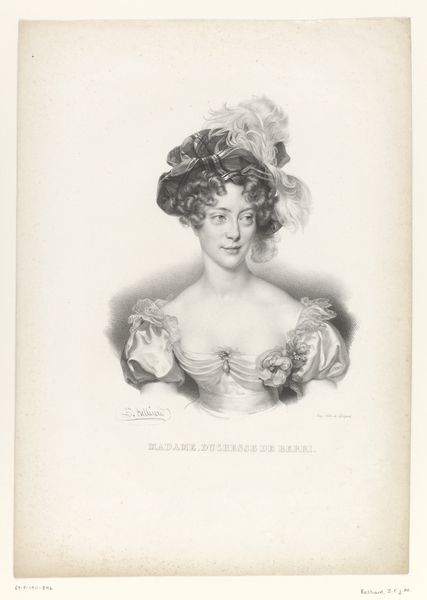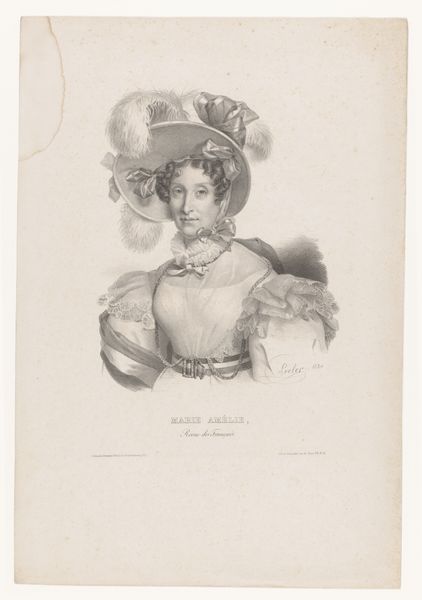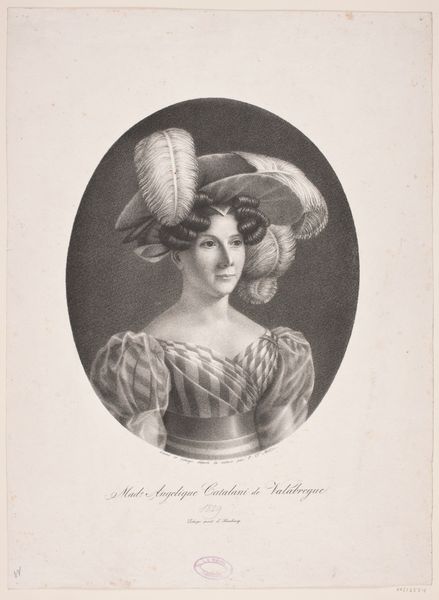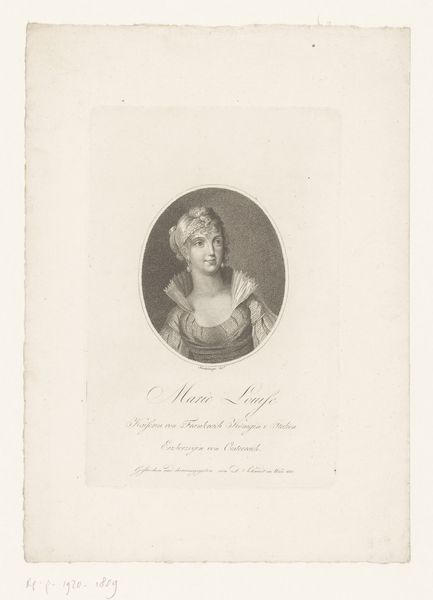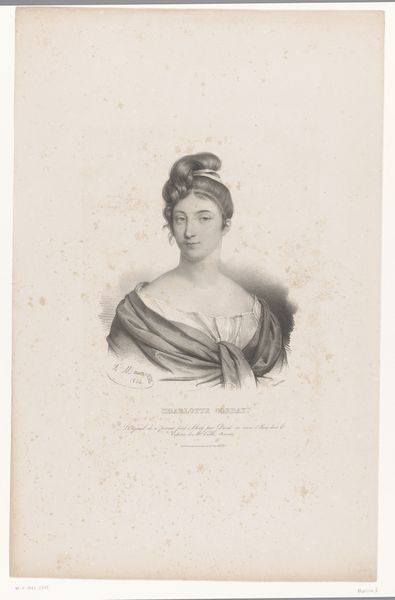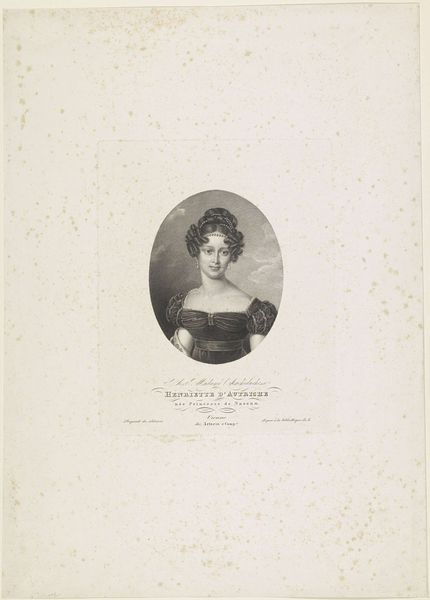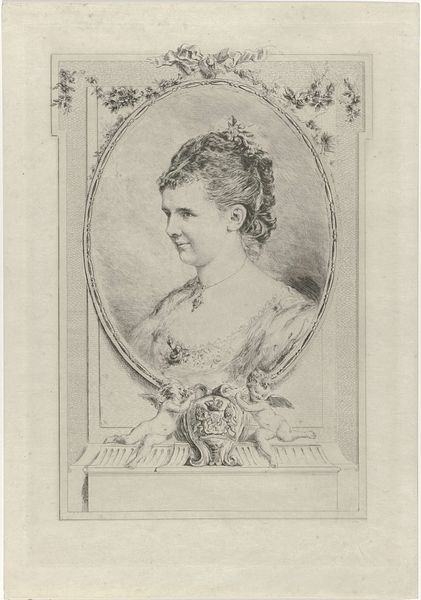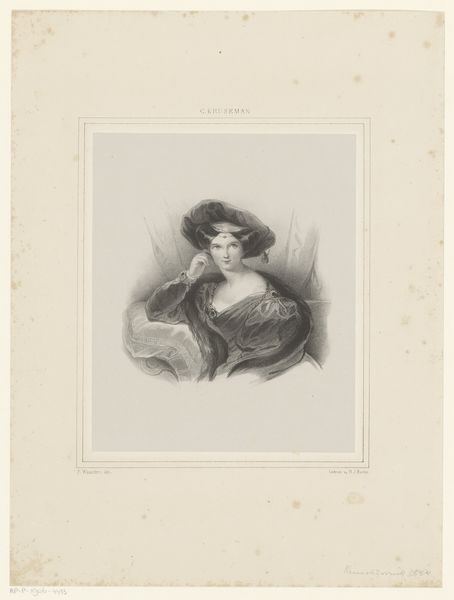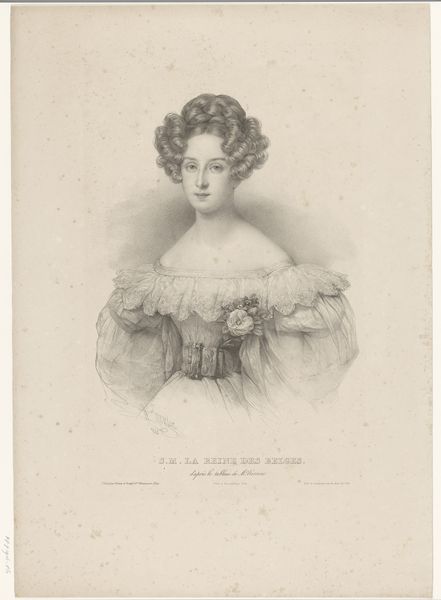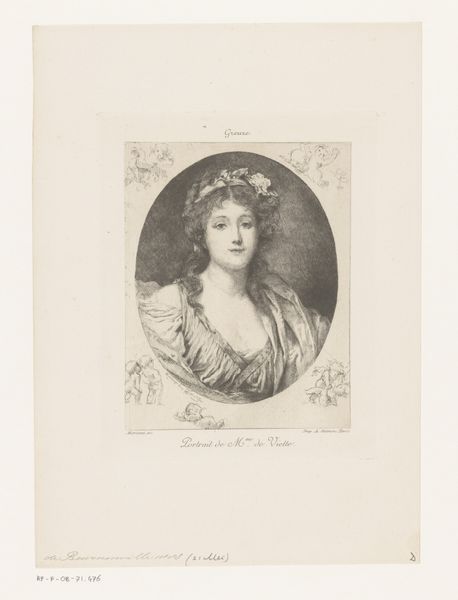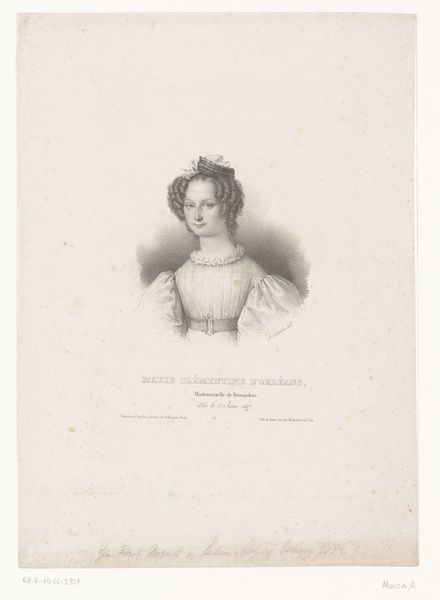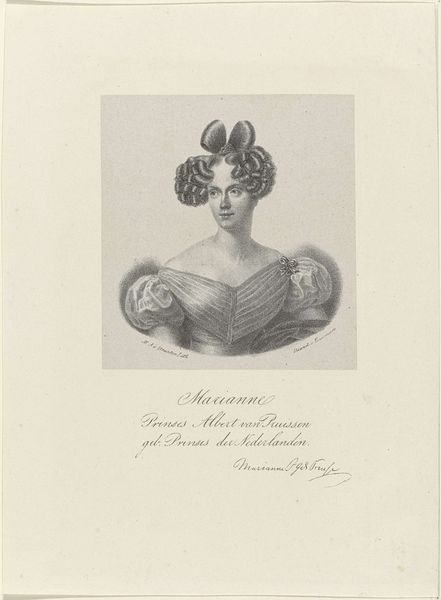
drawing, print, engraving
#
portrait
#
drawing
#
neoclacissism
# print
#
old engraving style
#
figuration
#
pencil drawing
#
line
#
academic-art
#
engraving
#
realism
Dimensions: height 225 mm, width 155 mm
Copyright: Rijks Museum: Open Domain
Curator: Looking at this work, titled "Portret van Maria Carolina van Bourbon-Sicilië," dating back to somewhere around 1830-1845, I'm struck by how the artist, N.M. Schild, managed to evoke a sense of gentle nobility with what appears to be a print or engraving. What are your initial thoughts? Editor: Immediately, the crisp lines against the pale paper jump out. It's all very controlled, almost like an advertisement selling a particular type of aristocratic womanhood and its relationship to the production of clothing or luxury goods – feathers, perhaps? The materials would dictate much of its meaning in that period, reflecting societal structures. Curator: Yes, absolutely. There's an undeniable academic formality. The delicate hatching emphasizes a certain sweetness of expression in her features, softening what could easily become a stark or severe portrait. I almost get the feeling that I know something about her. But I’d expect that sort of representational goal from art in that era, a hope that a work can act as more than just a document. Editor: True. It is crafted with precision and care to show its links to the circles it emerges from. Consider how this piece engages in a print economy, relying on repeatable processes rather than purely original brushstrokes, the value resides in wider accessibility and the status of the sitter in turn. What level of skilled labour has made it here and whose consumption is it advertising? Curator: A good question! When you put it that way, it reminds me that this image serves more than one purpose. I’m thinking, in some way, the texture evokes a ghost, like holding on to her memory through its distribution, or through the commodification and wider societal accessibility you mentioned, a preservation. Does that make sense, to think of memory through the production process like that? Editor: Definitely! It underscores the value society assigns to certain individuals and how this influences artistic output. What messages about class, taste, and accessibility do its form and dissemination contribute? To look beyond just an image is to reveal these processes which, ultimately, decide what stays visible to us through history. Curator: It really adds a layer of poignancy when seen from that perspective. You made me appreciate the silent labor within this gentle portrait. Editor: And your insights have sparked an image beyond the materiality - which breathes a ghostly sense of history in the production - truly a rich blend of interpretations to discover new layers in an older art piece.
Comments
No comments
Be the first to comment and join the conversation on the ultimate creative platform.
